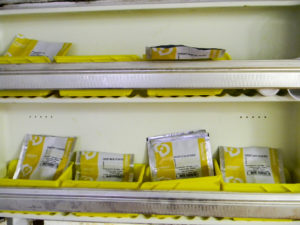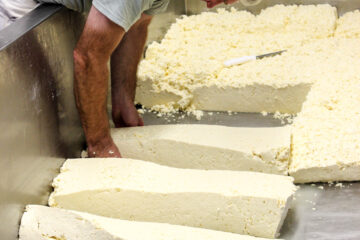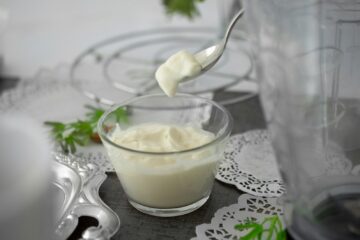Have you ever wondered how a simple glass of milk transforms into the rich, flavorful cheeses you love?
Let’s take another peek behind the scenes at Clover Creek Cheese Cellar and explore the fascinating world of cheese cultures.
Good Bacteria: Not All Microbes Are Bad
During our school tours, we always start with a question: Are bacteria good or bad?
Kids usually say bad, thinking about hand-washing and germs.
But as a home cook, you know the truth — some bacteria are incredibly beneficial.
Just like when you make yogurt or kombucha, cheesemaking relies on special bacteria to create magic.
Two Types of Cheese Cultures: Mesophilic and Thermophilic
Not all cheese cultures are created equal.
We use two primary types of bacteria in our cheesemaking: mesophilic and thermophilic.
Mesophilic bacteria work best at room temperature, typically between 70-90°F.
These cultures are perfect for our softer cheeses like Clover, Galen’s, and Pirate Blue.
Thermophilic bacteria, on the other hand, thrive at higher temperatures, around 100-130°F.
These heat-loving bacteria are ideal for creating harder cheeses like Royer Mountain and Moshannon.
There are also other ones called adjunct cultures that help with the flavor development during the aging process.
Understanding Acid Development
Before we can begin culturing, we carefully measure our fresh milk’s pH.
Think of pH as a fermentation roadmap — it tells us how acidic our milk is.
Our morning milk starts neutral, sitting around 6-7 on the pH scale.
Want to learn where our milk comes from?
Check out last time’s blog post about the morning milking.
Introducing the Cheese Cultures: Nature’s Flavor Creators

Our cheese cultures are special lactic bacteria that ferment our milk.
These bacteria digest milk’s natural sugars and produce lactic acid.
We get our cultures in little foil packets — tiny packets of potential packed with freeze-dried bacterial powders.
Adding Cultures to the Cheese Vat
When we started making cheese many years ago, Dave meticulously crafted recipes for each cheese variety.
When I took over as cheesemaker, I tweaked and updated the recipes.
Using a precise gram scale, the cheesemaker calculates and sprinkles the freeze-dried bacteria across the milk.
We gently stir them in, then wait patiently as they work their transformative magic.
Starters vs Terroir
It’s these added bacteria that get the fermentation process kicked off in the right direction, but the real flavor development comes from the natural cultures that come in with the milk.
Those natural bacteria from the cows and the land they graze give our cheese a unique taste that is special to our farm and the land we manage.
Next time we’ll move on to the following step of cheesemaking: adding rennet!
A Family Tradition of Wholesome Cheesemaking
When you choose Clover Creek, you’re not just buying cheese.
You’re supporting a family farm committed to traditional, thoughtful cheesemaking.
Next time you serve our cheese, remember the microscopic heroes that make each bite possible.



0 Comments